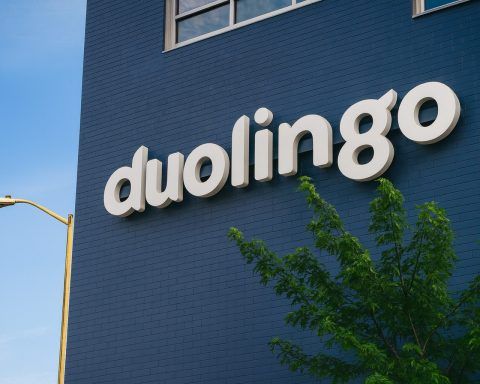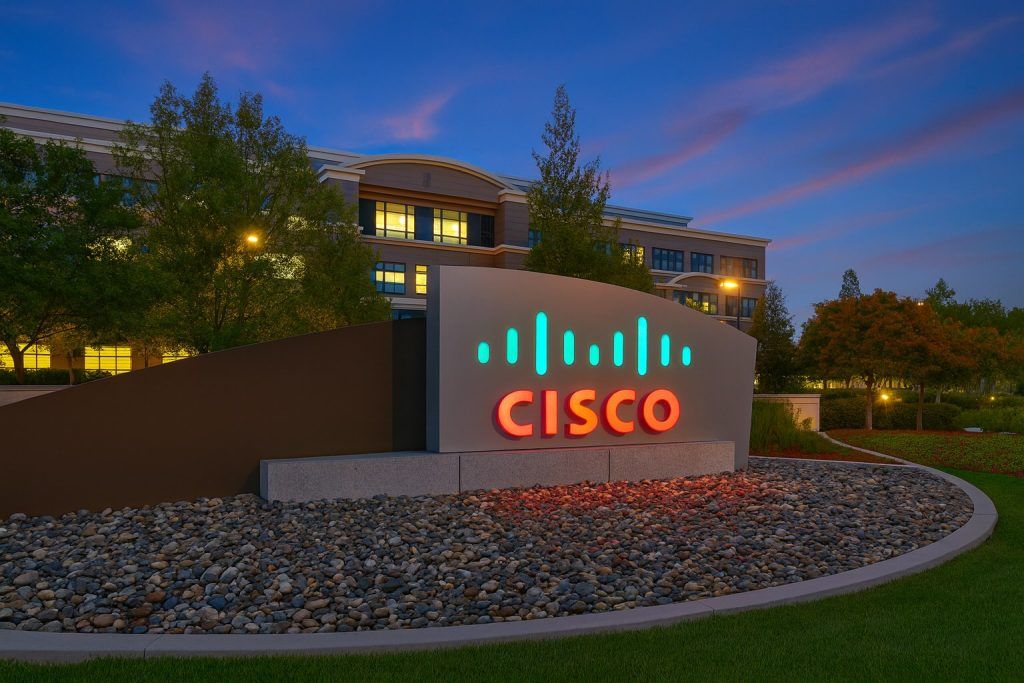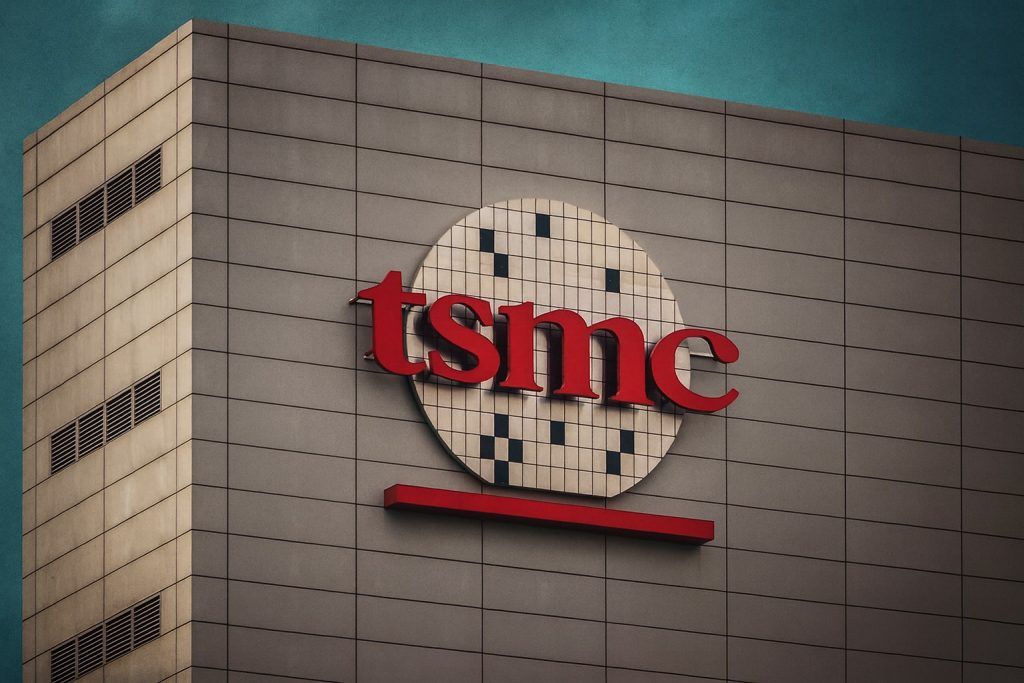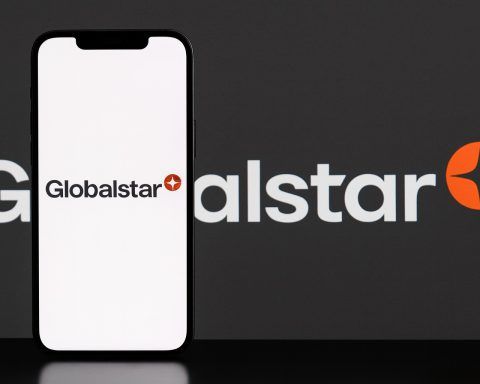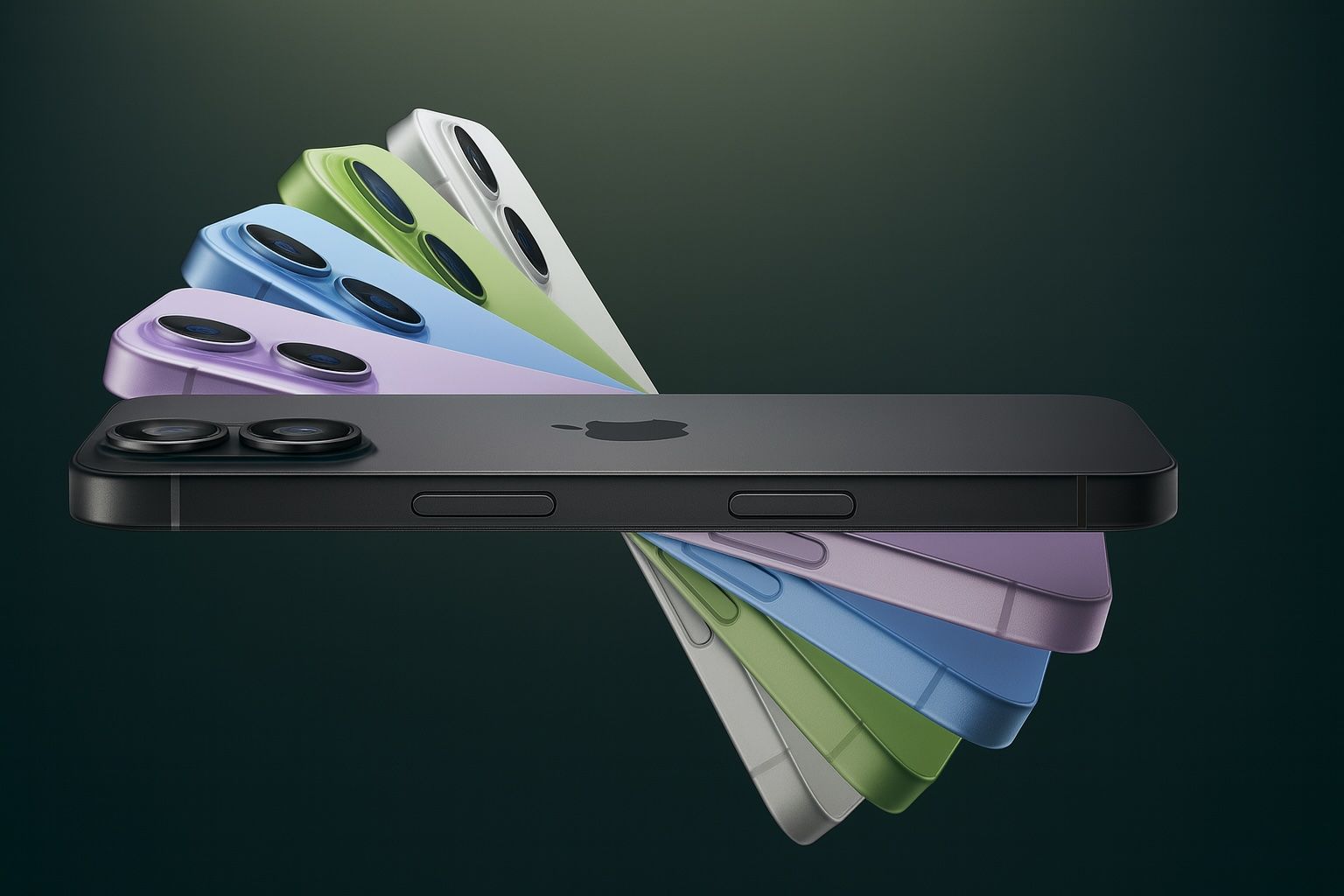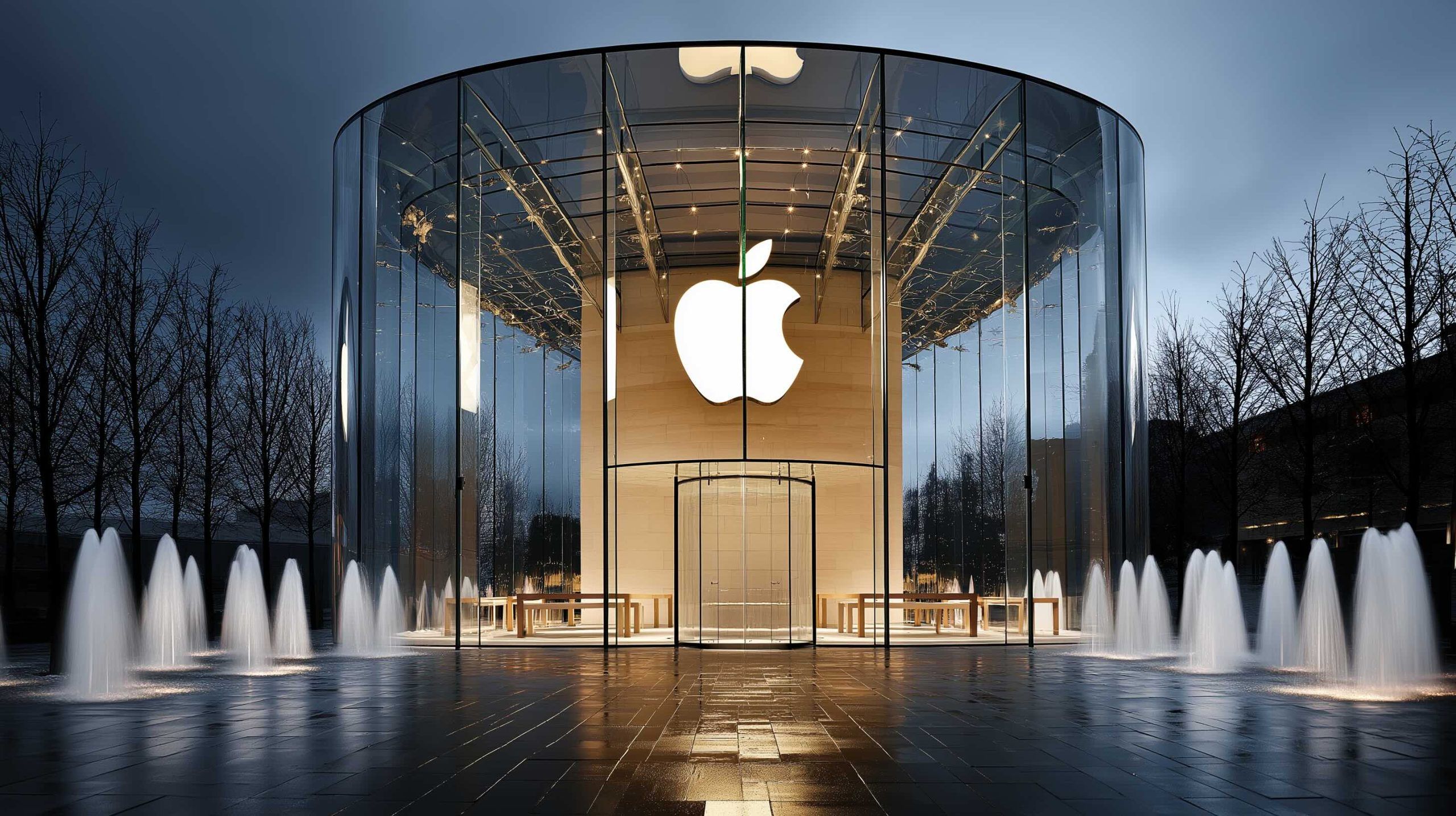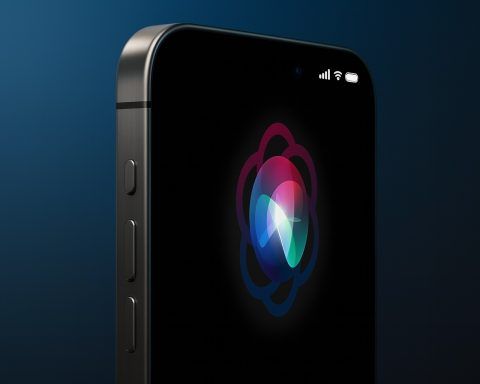- Current Price & Performance: Apple Inc. (NASDAQ: AAPL) trades around $256 per share as of October 8, 2025 – hovering near its all-time high (~$260) [1] [2]. The stock is roughly flat in 2025(+2% year-to-date) after a choppy year, lagging many peer tech stocks (e.g. Nvidia +35%) [3].
- Recent Trading: Low volatility this week – AAPL closed virtually unchanged on Oct. 7 (−0.08%) amid lighter-than-usual volume [4]. Investors appear to be in “wait-and-see” mode ahead of Apple’s late-October earnings release, with the stock holding in the mid-$250s range.
- iPhone 17 “Supercycle”: Strong early demand for the new iPhone 17 lineup (launched in Sept 2025) is fueling optimism. Sales are tracking 10–15% higher than last year’s cycle, which could herald a “pent-up consumer upgrade cycle” not seen in years [5]. Wedbush estimates ~315 million of the 1.5 billion active iPhones worldwide are 4+ years old, a huge pool of potential upgraders [6].
- Analyst Sentiment Split: Wall Street is divided on AAPL’s upside. Bulls like Wedbush’s Dan Ives just hiked his target to $310, citing record iPhone demand and an oncoming “golden era” for Apple [7]. But Jefferies turned bearish, downgrading AAPL to Underperform and warning the stock reflects “excessive expectations” for next-gen iPhones [8]. The average 12-month target sits in the mid-$240s [9] – slightly below the current price – reflecting valuation concerns despite a consensus Buy/Outperform rating.
- Strong Fundamentals: Apple’s latest quarterly earnings (fiscal Q3 2025) beat expectations with revenue of $94.0 billion (+9.6% YoY) and EPS of $1.57 (vs $1.43 forecast) [10]. All major segments grew, and gross margins near 46% topped estimates [11]. The company guided for mid-to-high single-digit revenue growth in the current quarter, signaling continued momentum [12].
- Risks & Opportunities: Key headwinds include looming regulatory changes – e.g. the EU’s Digital Markets Act will force Apple to open iOS to third-party app stores by 2026 [13] – and tough competition (Samsung in smartphones, Nvidia/Google in AI) [14]. However, Apple’s ecosystem moat (1.5+ billion devices) and massive R&D investments in AI, custom silicon, and new products (AR/VR, etc.) provide significant long-term growth levers [15] [16].
Overview: Apple Inc. and Recent Performance
Apple Inc. – the world’s largest company by market capitalization – has had a mixed 2025 so far. With a market cap around $3.8 trillion [17], Apple’s size means even modest growth is hard-fought. Year-to-date, AAPL stock is roughly flat (+~2%), underperforming the broader tech sector [18]. This muted performance comes despite Apple achieving record financial results in 2025 (its June quarter revenue jumped ~10% YoY to $94 billion) [19]. Early in the year the stock sold off amid market rotation and AI hype elsewhere, at one point down ~17%. But a strong rebound in late summer – fueled by booming iPhone sales – brought Apple’s stock back near all-time highs heading into October [20] [21].
Investors have been cautiously optimistic. Apple’s fiscal Q3 2025 earnings (reported in late July) handily beat forecasts, with EPS $1.57 vs $1.43 expected and broad-based growth across iPhone, Mac, and Services segments [22]. The company even raised its outlook, projecting an acceleration to mid/high single-digit revenue growth for Q4 2025 [23](well above the near-flat guidance from earlier in the year). Those results, plus the successful launch of the iPhone 17, helped restore confidence and pushed AAPL stock into an uptrend. By late September, shares traded around $255, making Apple slightly positive for 2025 and putting a $4 trillion market cap within reach [24] [25].
It’s worth noting that Apple’s 2025 gains look modest next to some peers. Mega-cap tech generally rallied this year, but Apple’s +2% YTD lagged the likes of Nvidia (+35%), Microsoft (+23%), Alphabet (+29%) and even the NASDAQ index [26]. Apple entered the year near record highs, so its slower climb suggests that lofty expectations and a lack of a “next big thing” kept the stock in check. Still, at ~$256 per share, AAPL is just a hair off its 52-week peak (~$260) [27] and has vastly outperformed the broader market over the past decade. The company’s enormous cash flows and resilient brand franchise continue to make it a cornerstone holding for many investors.
Current Stock Price (Oct 8, 2025) and Recent Fluctuations
As of October 8, 2025, Apple’s stock price is around $256, near its highest levels ever [28]. The stock opened at $256.48 on Oct. 8 and has been hovering in the mid-$250s throughout the week. This is only a few dollars shy of Apple’s all-time intraday high (~$260.10) set in late September [29]. In fact, Apple is flirting with the milestone of a $4 trillion market capitalization (roughly $264.5 per share would equate to $4T) [30], underscoring just how large and valuable the company has become.
Short-term movement has been relatively muted in recent days. On Tuesday (Oct. 7), AAPL closed essentially flat (down a mere 0.08%) on light trading volume [31]. The stock’s turnover fell ~29% from the prior day, and Apple actually dropped to 7th place in U.S. trading volume rankings – an unusually low showing for one of the market’s most traded names [32] [33]. Analysts interpreted the calm as investors taking a breather: with no major catalysts early in the week, many traders sat on the sidelines, awaiting more significant news (like Apple’s upcoming earnings report or macro data) [34].
Despite the quiet trading, Apple’s technical backdrop is strong. The stock’s 50-day moving average has climbed to ~$235 and the 200-day around $215 [35], reflecting the uptrend since the summer. Apple remains comfortably above both markers – a bullish sign – and has been making a pattern of higher highs. Some overbought signals have emerged, however. Notably, when AAPL hit ~$260 in late September, chart watchers saw a potential “evening star”candlestick pattern and a bearish divergence on RSI, hinting that momentum was stalling in the very near term [36]. So far that has translated into a brief pause around the mid-$250s. Key support levels to watch include roughly $237(coinciding with the 50-day average and prior resistance) and around $218 (the next major support if a deeper pullback occurs) [37]. On the upside, if the rally reignites, some technical analysts have price projections in the $275–$280range over coming months [38]. In short, Apple’s stock is consolidating near record highs, with the next move likely hinging on upcoming news (earnings, guidance, holiday sales, etc.).
Recent News and Events (Early October 2025)
Even in a relatively quiet week for Apple, a few noteworthy developments have emerged:
- Analyst Rating Upgrades: In a show of confidence, CLSA upgraded Apple to “Strong-Buy” in an Oct 5 research note (reported Oct 8) [39]. The upgrade reflects increasingly positive sentiment around Apple’s prospects going into year-end. AAPL’s stock price, around $256 at the time, implies a lofty valuation (~39× P/E) – but CLSA’s bullish call suggests they see further upside, joining a cohort of brokers turning more optimistic. (Seaport Research Partners likewise bumped Apple to a Strong Buy in early October [40].) According to MarketBeat data, Apple now has 4 Strong Buy, 15 Buy, 13 Hold and 2 Sell ratings, with an average price target about $247 [41]. That average target is below the current price, indicating many analysts feel Apple’s near-term upside is limited unless new growth catalysts emerge.
- Mixed Analyst Signals: Not all recent analyst commentary has been rosy. UBS reiterated a Neutral rating on Apple (with a $220 price target) and noted that demand for the iPhone 17 may have “passed its peak.” UBS is cautious that after the initial launch buzz, iPhone sales could normalize, and they advise a balanced view on the stock [42]. Meanwhile, Jefferies made waves on Oct 3 by downgrading Apple to Underperform (from Hold) – a rare outright bearish call on the tech giant. Jefferies’ analyst Edison Lee argued Apple’s valuation “appears overvalued” near record highs and reflects “excessive expectations” for next year’s iPhone cycle, including the anticipated iPhone 18 and a foldable model [43] [44]. He trimmed his price target to about $205, implying ~20% downside [45]. This downgrade, coming even as Jefferies raised its iPhone unit forecasts, highlights concern that Apple’s stock is pricing in too much growth from future iPhones. (Notably, Jefferies’ skepticism comes despite solid iPhone 17 uptake – the firm thinks the boost from iPhone 17 is already baked in, and that excitement over a foldable “iPhone 18 Fold” is premature [46].)
- Regulatory Relief in EU: On the regulatory front, Apple got a potential bit of good news. Reports on Oct 8 indicate Apple (and Meta) are close to a settlement with EU regulators to resolve major antitrust cases under the new Digital Markets Act (DMA) [47]. Apple has been battling EU scrutiny over its App Store policies and had faced threats of escalating daily fines – up to $58 million per day – for non-compliance [48]. According to the Financial Times, negotiations are in final stages for a deal that would avoid those extreme penalties [49]. Apple has already made some concessions (e.g. adjusting App Store rules on payment links and fees [50] [51]), and a settlement would likely formalize changes to bring Apple in line with the DMA. Investors cheered the prospect of removing a cloud of uncertainty and avoiding potentially huge fines. While Apple will still have to open up its ecosystem (allowing third-party app stores, etc.), an orderly settlement suggests the company can manage the transition without continuous legal battles. This development follows other regulatory news: in the U.S., Apple’s win in an Epic Games appeal and progress in DOJ antitrust inquiries have been closely watched, as regulatory outcomes could impact Apple’s services revenueover time [52].
- Product & Supply Chain Updates: No major new product launches occurred in the first week of October, but Apple’s latest hardware lineup (revealed at September’s “Wonderlust” event) continues to roll out globally. The iPhone 17 series (base, Pro/Pro Max, and the new mid-tier iPhone 17 Air) is seeing robust initial sales. In fact, shipping lead times for many iPhone 17 models are longer than last year’s iPhone 16, hinting at strong demand and/or tighter supply [53]. Early sales in China have been especially brisk – helped by government device subsidies and high interest in the new iPhone Air model [54]. Apple is reportedly preparing its usual October product event, where it could unveil updated iPad Pro and MacBook Pro models (potentially with next-gen M5 chips), though some Mac updates might slip to early 2026 [55]. On the supply chain front, Apple is continuing its multi-year effort to diversify production away from China. The company is ramping up manufacturing in India and Vietnam for devices like iPhones, AirPods and Macs [56]. This strategy gained urgency amid U.S.-China trade tensions – Apple even saw U.S. tariffs prompt a surge of early upgrades as customers raced to buy before potential price hikes [57]. In early October, Apple also announced a new $500 million commitment to bolster its U.S. supply chain for rare-earth materials (via a partnership with MP Materials), underscoring Apple’s push to secure critical components domestically (a move aligned with U.S. policy goals).
- Legal and Other News: Apple’s name popped up in some unusual headlines as well. In the AI arena, Elon Musk’s startup xAI filed a lawsuit accusing Apple and OpenAI of anti-competitive practices – essentially alleging an “exclusive” arrangement that disadvantaged xAI’s app in the App Store. However, this week Apple (and OpenAI) moved to dismiss the suit [58], denying any such collusion. While the claim hasn’t made a big splash with investors (many view it as a long-shot case), it’s a reminder that Apple faces legal challenges on multiple fronts – from antitrust regulators to private competitors – as it extends its reach in services and software. Lastly, market observers are eyeing Apple’s calendar: the company’s Q4 FY2025 earnings report is expected later this month. Any early hints about iPhone 17 sales, holiday quarter guidance, or margins will be key for the stock’s next direction. Thus, the relatively flat trading this week suggests traders are holding their breath for those bigger news events to come.
Expert Commentary & Analyst Forecasts
Wall Street analysts are actively debating Apple’s valuation and growth trajectory, leading to a mix of bullish and cautious outlooks. Below are some notable expert takes on AAPL stock right now, in their own words:
- Wedbush Securities (Dan Ives) – Very Bullish (Outperform): “The Apple Intelligence rollout and record iPhone 17 demand have us raising our 12-month target to $310.” [59] Ives argues the Street is underestimating this iPhone upgrade “supercycle.” He notes Apple has “hundreds of millions” of older iPhones in the user base primed for upgrade, which alongside new AI features could drive a “golden era” of growth into 2025 [60] [61].
- Morgan Stanley (Team led by Katy Huberty) – Bullish (Overweight, $240 target): “Apple’s largest base of pent-up iPhone demand, new AI features slowly rolling out, and renewed device innovation should accelerate iPhone growth starting FY26.” [62] Morgan Stanley sees Apple’s fundamentals as rock-solid and its innovation pipeline (AI, hardware, services) supporting sustained growth. They also cite Apple’s long-term investments in payments, health and AI as “key arguments for sustained growth.” [63] (MS’s $240 target is a bit below current levels, reflecting some near-term caution, but they remain positive long-term.)
- BofA Securities (Wamsi Mohan) – Bullish (Buy, $270 target): The Bank of America analyst recently reiterated his $270 price objective for Apple, highlighting the company’s pricing power and margin resilience. He points out Apple slightly raised iPhone 15/17 prices in some regions (helping offset higher costs and tariffs) while boosting trade-in offers and carrier deals, which “may spur additional upgrades.” Mohan now forecasts Apple can hit about $8.40 in EPS in calendar 2026, up from a prior $8.37 estimate, reflecting confidence in continued profit growth [64]. In short, BofA sees Apple delivering mid-to-high single-digit earnings growth and justifying a higher share price in the coming years.
- Evercore ISI (Amit Daryanani) – Positive (Outperform, $290 target): Evercore has drawn attention to Apple’s Services business. While App Store revenue growth decelerated to +7% YoY in September (from +14% in August), they view this as a temporary slowdown [65]. Evercore reiterated its $290 target, expressing confidence that upcoming product upgrades and an expanding services ecosystem (apps, subscriptions, etc.) will reaccelerate Apple’s growth. They consider the current lull an opportunity, not a long-term red flag.
- CLSA – Positive (Outperform, $265 target): CLSA’s analysts also remain upbeat, recently maintaining an Outperform rating (even before their new Strong Buy sector call) with a ~$265 target [66]. They cite the potential for a major upgrade cycle rolling into 2026 (with new device form-factors like foldables, and refreshed Macs and wearables) to drive revenue higher. CLSA’s upgrade to “Strong-Buy” this week underscores their conviction that Apple can outperform as the holiday season and product cycle momentum build [67].
- UBS (David Vogt) – Neutral (Hold, $220 target): Swiss bank UBS is more cautious. They kept Apple at Neutral, reasoning that the initial iPhone 17 sales spike has likely peaked and that tougher comps lie ahead [68]. UBS worries that global smartphone demand is plateauing, and Apple may face slower growth in 2026 unless new product categories take off. Their $220 target implies potential downside, though UBS isn’t outright bearish – they acknowledge Apple’s strengths but feel the risk/reward is balanced at current valuation.
- Jefferies (Edison Lee) – Bearish (Underperform, ~$205 target): Jefferies is one of the few firms on the Street ringing alarm bells. In an Oct 3 note, they slashed Apple to Underperform. Lee contends that Apple’s stock price “implies more than twice” the iPhone unit sales that Jefferies expects from the upcoming iPhone 18 Fold each year [69]. He calls out “excessive expectations” baked into the valuation [70]. Essentially, Jefferies believes Apple’s current ~$3.8T valuation is hard to justify unless Apple delivers significant upside surprises – which they doubt, given smartphone market saturation and potential missteps (e.g. a foldable iPhone appealing to a niche). This contrarian view hasn’t been widely adopted (Jefferies is now one of only 2 Sells on Apple [71]), but it has added to the debate on whether Apple’s stock is overheating.
Outside analysts, even Apple’s own management has chimed in with an optimistic tone. CEO Tim Cook recently stressed that Apple is “significantly growing” its investments in artificial intelligence, with “good progress” being made on new AI-driven features like a more personalized Siri [72]. CFO Luca Maestri noted that a sizable chunk of Apple’s increased capital expenditures is going into AI infrastructure and future technology development [73]. This messaging from leadership aligns with bullish analysts who argue that Apple’s next leg of growth will come from AI integration, augmented reality, and other innovations (much as past growth came from the iPhone, App Store, etc.).
Overall, the analyst consensus on AAPL is still “Buy/Outperform,” but with a wide spectrum of price targets and opinions. The median price target in the $245–$250 range suggests limited near-term upside [74], yet top optimists see Apple roaring toward $300+. This split viewpoint reflects Apple’s unique position: a company with tremendous strengths and a loyal customer base, but also a stock priced for perfection in a maturing market.
Fundamental Analysis: Revenue, Growth and Valuation
Apple’s fundamental performance remains robust, even as growth has moderated from the torrid pace of past years. Key points from recent financials and metrics:
- Revenue & Earnings Growth: In the quarter ended June 2025 (Apple’s fiscal Q3), revenue reached $94.0 billion, up +9.6% year-over-year [75]. This marked Apple’s best growth in over a year, snapping a streak of more sluggish quarters. Importantly, it beat analyst expectations by a wide margin (consensus was ~$88.6B) [76]. Earnings per share came in at $1.57, comfortably topping the $1.43 consensus [77]. All major product categories contributed: iPhone sales jumped ~13% YoY to $44.6B [78], Macs and iPads saw solid demand (helped by new M2 devices and back-to-school season), and Apple’s Services segment (App Store, iCloud, Apple Music/TV+, etc.) hit an all-time high of $27.4B in the quarter [79]. Notably, Apple’s growth was especially strong in emerging markets and Asia, where an expanding middle class is driving new customer additions to the ecosystem.
- Profitability & Margins: Apple’s business continues to be a money machine. Gross profit margins are around 45–47%, among the highest in the industry [80]. In Q3, the gross margin of ~46.5% actually beat estimates, showing Apple maintained pricing power despite higher component costs [81]. Operating margin is also exceptional; Apple turned roughly 25% of revenue into net profit last quarter [82]. Its trailing twelve-month net income is near $100 billion [83] – a figure only a handful of companies in history have achieved. Return on equity is off the charts (recently 171% [84], boosted by Apple’s capital return programs). This profitability is buoyed by the lucrative Services business (with ~70% gross margins) and Apple’s tight cost control and supply chain efficiency. Apple’s ability to steadily increase average selling prices (for iPhones, iPads, etc.) without dampening demand has also been key to preserving margins [85]. For example, the iPhone 15/17 Pro models saw small price hikes, but robust trade-in offers kept unit sales rolling [86].
- Cash Flows & Capital Return: Apple’s operations generate enormous free cash flow – on the order of $20+ billion per quarter. The company ended the last quarter with $166.5B in cash and marketable securities (offset by ~$109B in debt) – a net cash position of nearly $60B, which is down from prior years as Apple has been returning cash aggressively to shareholders. In FY2025, Apple is on track to spend about $90 billion on share buybacks, continuing a trend of massive repurchases (it bought $23.6B in stock just in Q1 FY2025 alone [87]). These buybacks shrink the share count and boost EPS growth. Apple also pays a modest dividend of $0.24 per quarter (about 0.4–0.5% annual yield) [88] [89] – low by market standards, but Apple has been raising the dividend each year. The relatively low yield reflects that Apple prefers buybacks (for tax efficiency) and that investors are willing to accept a tiny yield given Apple’s growth and safety profile. With over $100B in annual operating cash flow, Apple has plenty of firepower to keep funding R&D, capital expenditures (guiding ~$25B for FY2025, with a focus on new chip facilities and AI infrastructure [90]), strategic acquisitions, and shareholder returns simultaneously. This financial strength is a major investment draw – Apple isn’t just a tech innovator, it’s a cash-generating colossus.
- Valuation Metrics: At ~$256 per share, Apple trades at roughly 38–39 times trailing 12-month earnings [91] [92]. That P/E multiple is elevated relative to Apple’s own history and to the broader market (the S&P 500 is ~19×). It indicates investors are pricing in future growth and Apple’s competitive moat. On a forward basis (looking at FY2025–26 earnings forecasts), Apple is around 30× forward earnings, still rich for what is now a single-digit growth company. Other metrics: Apple’s enterprise value is about 7.5× its annual revenue and ~30× free cash flow – again, high by past standards. However, Apple’s quality premium and unparalleled brand loyalty often merit a higher multiple. The PEG ratio (P/E to growth) is roughly 2.5 [93], reflecting that expected earnings growth (~12–15% annually in analyst models) is solid but not hyper-fast. The stock’s dividend yield ~0.5% and shareholder yield ~3% (including buybacks) provide some valuation support. Comparing Apple to peers: it’s valued higher (on P/E) than Microsoft (~33× forward), Amazon (~50× forward) and definitely more than cyclical techs like Samsung (~9× forward earnings) [94]. But it’s cheaper than Nvidia (over 50× forward) and some cloud/software names. The big question is whether Apple’s earnings will accelerate enough (through new product categories or continued iPhone upgrades) to grow into this valuation. Consensus estimateshave Apple’s revenue rising ~6% in FY2025 and ~8% in FY2026, and EPS growing from ~$6.50 in FY2024 to ~$7.50 in FY2025 and ~$8.40 in FY2026 [95]. That implies a forward PEG closer to 2, which many argue is reasonable for Apple’s stability and brand strength. Still, any disappointment – e.g. a weaker iPhone cycle or margin squeeze – could put pressure on the lofty multiple, as bears like Jefferies warn.
In summary, Apple’s fundamentals are remarkably strong: blockbuster sales, high growth in services, huge profits and cash returns. The company is essentially firing on all cylinders operationally. The valuation debate centers on whether this excellence is fully priced in, or if Apple can surprise to the upside (with new revenue streams like AR/VR, automotive, or simply a longer iPhone supercycle) to justify even more expansion. Thus far in 2025, Apple has shown it can exceed expectations – but the bar remains high.
Technical Analysis Highlights
From a technical standpoint, AAPL’s stock chart has been largely bullish in the second half of 2025, but there are a few signals to watch:
- Uptrend and New Highs: After bottoming in early 2025, Apple’s stock formed a steady uptrend with higher lows and broke out to new all-time highs in late September. It cleared key resistance around $240 in mid-September, then surged to about $260 by month’s end [96]. This confirmed a record high for market cap (nearly $4T) and was seen as a bullish continuation pattern after months of consolidation. The trend pushed AAPL above its 50-day and 200-day moving averages, indicating positive momentum [97]. Those moving averages now slope upward, and Apple has not closed below its 50-day MA since back in early August – a sign of strong support on dips.
- Overbought Conditions: The swift rally into the $250s and $260 level did trigger some technical caution flags. On the weekly chart, Apple’s RSI (Relative Strength Index) moved into the high-70s, a zone considered overbought. And as mentioned, on the daily chart a potential “Evening Star” candlestick pattern appeared around the ~$260 peak [98]. This three-candle pattern (strong up day, narrow doji day, then a down day) often signals a short-term trend reversal when it appears after an extended rally. Additionally, momentum indicators showed bearish divergence – for example, the RSI made a lower high even as price made a higher high, suggesting weakening buying pressure [99]. These signals preceded a minor pullback: Apple dipped from ~$260 to ~$252 in early October. While not a severe drop, it shows the stock needed to work off overbought conditions.
- Support Levels: Chart analysts have identified a few key support zones. The first is around $237–$240, which was the old breakout zone (and roughly aligns with the 50-day MA) [100]. This level also marks Apple’s late-September lows. A pullback to that area, if it holds, would be considered a normal technical correction in an uptrend – potentially a buying opportunity for momentum traders. Below that, stronger support lies around $218–$220 [101]. That was a pivot level multiple times in 2024 and 2025, and it’s close to the 200-day moving averagenow. If broader market selling took Apple down into the $210s, many bulls would look for it to bottom out near $218 (failure to hold there could signal a more bearish trend change). On the upside, beyond the recent $260 high, some technicians use Fibonacci extensions and measured moves to plot potential targets. One such analysis pegged ~$278 as a possible next target if Apple resumes its rally – essentially extrapolating the size of the previous breakout move [102]. That target aligns with the idea that a decisive break over $260 could spur another leg higher. Of course, these are scenario analyses – actual movement will hinge on fundamental news.
- Volume & Market Tone: Volume patterns have been interesting. The rally in September saw a pickup in trading volume, indicating institutional buying. However, volumes tapered off in early October (as noted with Apple sliding in volume rankings) [103]. Some view this as a healthy consolidation; others note that a breakout without follow-through volume can be susceptible to reversals. Broader market factors (interest rates, sector rotations) are also at play – tech stocks have led the market in 2025, and Apple, as a large component of indices, is influenced by those flows. Its beta is ~1.09 [104], meaning it’s slightly more volatile than the market. If we see a rotation out of tech, Apple could temporarily underperform even on no company-specific news (as happened in early 2025 when AI-driven names stole the spotlight and Apple drifted).
In summary, Apple’s technical picture is bullish but not without near-term risks. The stock is in a strong uptrend, trading above key moving averages, yet some indicators suggest it’s due for a breather or minor pullback after the recent run-up. As long as Apple holds support levels and continues delivering solid results, technical traders will likely “buy the dip.” A sustained break below the 200-day MA (around $215–$220) would be a warning sign that momentum has shifted. Conversely, a high-volume push above $260 could signal the next leg higher is underway – potentially targeting the upper-$200s over time. Traders will be watching upcoming earnings and product news closely, as these will determine whether Apple’s chart breaks out or backs off in the weeks ahead.
Competitor and Industry Context
Apple sits at the crossroads of multiple industries (consumer electronics, software, services), so understanding its competitive landscape is crucial. In 2025, Apple’s stock story has also been one of relative performance versus peersand how Apple is navigating industry trends:
- Big Tech Peers: Compared to fellow “Magnificent Seven” tech giants, Apple’s stock has been a laggard in 2025. As noted, AAPL’s ~2% YTD gain trails Microsoft (+23%), Alphabet (+29%), Amazon (+1%), and especially Nvidia (+35%) [105]. Even the broader NASDAQ-100 is up double-digits. Part of this is simply the law of large numbers – Apple, at nearly $4T market cap, already trades at high multiples, so it didn’t see the same multiple expansion that AI-driven names did this year. Additionally, Apple hasn’t had a dramatic narrative like Nvidia’s AI chip boom or Meta’s “year of efficiency.” Instead, Apple’s story is steadier: incremental growth and ecosystem strength. This dynamic has led some investors to rotate into “hotter” tech names in 2025, leaving Apple temporarily in the dust. However, Apple’s lower share appreciation also means it could look relatively attractive on a risk-adjusted basis – it’s less volatile and more proven than many high-flyers. Indeed, Apple’s beta (~1.1) is lower than most peers [106], reflecting its stability. By late September, Apple’s underperformance gap narrowed thanks to its own rally, and it remains one of the most valuable and widely held stocks on the planet.
- Smartphone Rivals (Samsung & Others): In the smartphone realm, Apple’s perennial arch-rival is Samsung Electronics. Interestingly, Samsung’s stock has soared ~50% year-to-date (in local currency) as of Q3 2025, dramatically outperforming Apple [107]. But context matters: Samsung started 2025 at depressed levels after a rough 2023, whereas Apple began near record highs [108]. Samsung’s surge has been driven by a rebound in its semiconductor business (memory chip prices recovering, plus a $16.5B chip contract win from Tesla) [109]. In contrast, Apple, with no such cyclical boost, delivered more consistent results. Fundamentally, the two giants have different profiles: Apple relies on premium devices and a services ecosystem, while Samsung is more diversified, selling everything from Galaxy phones to TVs to memory chips [110]. Samsung’s diversification gives it exposure to chip industry cycles (which can be boom-or-bust) – for example, Samsung’s operating profit plunged 55% YoY recently due to a chip slump [111]. Apple’s profits are steadier, but it does face the challenge of a maturing high-end smartphone market. In markets like the U.S. and Europe, Apple already has a commanding share; growth depends on replacement cycles and upselling existing customers. Samsung, along with Chinese rivals (Huawei, Xiaomi, etc.), competes fiercely in Asia and emerging markets, sometimes undercutting on price. Apple’s strategy has been to lean into its premium brand – it has about one-third of global smartphone revenue with only ~18% unit share, thanks to its high ASPs (average selling prices) and loyal customer base. That said, competition in China has heated up: Huawei’s return with new 5G phones has posed a challenge, and some Chinese government agencies reportedly curtailed iPhone use, creating a potential headwind [112]. Apple will rely on its brand cachet and ecosystem (iMessage, App Store, etc.) to retain users even as rivals circle.
- AI and Chip Race: One of the big narratives of 2025 is the AI revolution, and here Apple finds itself in a different competitive stance. Nvidia – whose market cap astonishingly surpassed Apple’s at one point in 2025 [113] – has led the AI hardware boom with its GPUs. Apple, on the other hand, is often seen as lagging in AI: its Siri voice assistant and on-device AI features are considered behind the curve compared to cloud-based AI from Google or the latest large language models. Apple’s approach to AI is more behind-the-scenes – integrating machine learning efficiently into devices (e.g. the Neural Engine in its chips, on-device processing for privacy). It doesn’t have a huge cloud AI platform to sell. This contrast has been noted by investors; the perception of Apple as an “AI laggard” weighed on the stock earlier in 2025 [114]. However, Apple is intent on changing that narrative: it’s reportedly developing an internal conversational AI (codenamed “Apple GPT” or “Veritas”) to significantly upgrade Siri and other services [115] [116]. If Apple can launch compelling AI-driven features in 2024–2026, it could narrow the perceived AI gap. Additionally, Apple’s M-series custom chips give it some edge – they are efficient and powerful for personal devices, even if not aimed at training giant AI models like Nvidia’s.In chips, Apple also competes indirectly with Intel, AMD, and Qualcomm. Apple’s switch to its own silicon (Apple Silicon) for Macs was a blow to Intel. Now there’s an ironic twist: rumors in late September suggested Intel approached Apple about a strategic investment in Intel’s foundry business [117] [118]. The mere hint of Apple potentially investing in Intel (to diversify chip manufacturing beyond TSMC) sent Intel’s stock soaring [119] [120]. While talks are unconfirmed and analysts see no obvious benefit for Apple unless Intel’s tech dramatically improves [121] [122], it shows Apple’s pivotal role in the chip supply chain. Apple’s huge chip demand (for iPhones, Macs, etc.) means any shifts – whether investing in new fabs or continuing to rely on TSMC – have industry-wide implications. Competitors like Qualcomm (which supplies modems to Apple, for now) and AMD are also watching Apple’s moves closely, as Apple has shown willingness to cut out partners and build its own components to gain control (a risk for those suppliers’ future revenue). In summary, Apple’s competition spans from handset makers, to chipmakers, to AI software – and Apple both collaborates with and competes against different players in this ecosystem.
- PCs, Wearables, Services: In PCs, Apple’s Mac lineup (now ~10% global market share) competes with the Windows PC ecosystem (Dell, HP, Lenovo, etc. using Microsoft and Intel tech). With Apple’s M-series chips, Macs have gained performance and battery advantages, pressuring the Wintel incumbents. Yet, Windows still dominates enterprise and gaming PCs – areas Apple is trying to make inroads into. In wearables, the Apple Watch is the market leader, but Google (Fitbit) and Samsung offer alternatives, and even traditional watchmakers are adding smart features. In music/streaming, Apple Music vs. Spotify; in video, Apple TV+ vs. Netflix/Disney; in payments, Apple Pay vs. PayPal, etc. Apple has an ecosystem play in all these, leveraging the iPhone install base to gain share. Often, Apple is not first to market (smartwatches existed before Apple Watch, streaming music before Apple Music), but it uses superior integration and user experience as a competitive edge. This strategy has generally worked but requires constant innovation to keep users from straying to rivals.
Across the board, Apple’s competitive advantages include its brand prestige, tight integration of hardware-software-services, and massive economies of scale. Its devices consistently rank high in customer satisfaction, and the “walled garden” keeps many users loyal (e.g., iMessage lock-in). The key competitive risks include: pricing pressure (can Apple keep charging premium prices as hardware commoditizes?), geopolitics (Apple’s reliance on China for production and sales is a vulnerability if U.S.-China relations worsen [123] [124]), and technological disruption (if a rival leapfrogs Apple in a crucial domain like AR glasses or AI experiences, could Apple lose its trendsetter status?). So far, Apple has managed to stay either ahead or quickly catch up in most areas. The next tests will be the AR/VR space (Vision Pro) where Meta and others are competing, and potentially the automotive realm (Apple Car rumors persist, while Tesla and others lead EVs). In sum, Apple operates from a position of strength but faces formidable competitors in each segment – it must continually execute well to maintain its dominant position in the tech industry.
Outlook for Investors: Risks and Opportunities Ahead
Looking forward, Apple’s narrative is a balance of huge opportunities on the horizon and notable risks that could pose challenges. Here’s what investors should weigh when considering AAPL:
Growth Opportunities & Catalysts:
- Massive Upgrade Cycles: Apple’s greatest asset is its installed base of over 1.5 billion active devicesworldwide [125]. This feeds a reliable cycle of upgrades – millions of customers will buy a new iPhone or Mac each year, providing a baseline of demand even without new converts. With the iPhone 17 cycle off to a strong start, analysts foresee a potential “super-cycle” extending into 2025–2026 [126]. As mentioned, hundreds of millions of iPhone users haven’t upgraded in 4+ years [127], so as long as Apple delivers compelling new features, many will eventually upgrade. This extends to other products: record numbers of users are also upgrading Macs, iPads, and Watches, per Tim Cook [128]. If Apple can tap into that pent-up demand (for example, by offering trade-in deals or introducing a must-have new design), it could enjoy several years of above-trend revenue growth.
- Services & Ecosystem Expansion: Apple’s Services segment (20%+ of revenue) is growing faster than hardware and carries high margins. The App Store, cloud services, AppleCare, advertising, and subscriptions (Music, TV+, Arcade, News+, Fitness+) collectively are on track to be a $100B+ annual business by 2026. There’s still room to grow: Apple is reportedly exploring new subscription bundles and services in finance and health. The more Apple ties users into its ecosystem with services, the more recurring revenue it secures – a transition investors love for its stability. Additionally, Apple’s moves in payments and fintech (Apple Pay, the Apple Card, and now high-yield savings accounts) signal a drive to make Apple a central hub of customers’ digital lives. Each new service makes it harder for users to leave the ecosystem, potentially allowing Apple to inch up monetization per user.
- Innovation Pipeline (AR, AI, etc.): Apple is on the cusp of entering new product categories that could open up significant markets. The most hyped is the Apple Vision Pro mixed-reality headset (launching in early 2024) – an “AR/VR” device that Apple calls a spatial computer. While the first version is ultra-premium and niche, if Apple can refine this technology, some see it eventually creating a new platform (like iPhone did) for apps, communications, and entertainment. Another frontier is automotive: Apple’s secretive car project (Project Titan) is rumored to be developing autonomous EV technology. Even if an “Apple Car” is years away or never materializes, the company could bring more of its tech to vehicles (advanced CarPlay, in-car services, etc.). Artificial Intelligence is the other big area – Apple is investing heavily in AI for on-device use (like the forthcoming AI-enhanced Siri and smarter personal assistant features) [129] [130]. If Apple can leverage AI to offer unique features (e.g. health monitoring, personalization, AR experiences), it strengthens its product appeal. There’s also talk of Apple creating its own AI chips for data centers or edge computing, which could diversify its chip business. Furthermore, Apple’s custom silicon team keeps innovating – the upcoming M3/M4/M5 chips for Mac and iPad will push performance higher, potentially allowing Apple to further encroach on PC gaming or high-end workstations, markets it historically didn’t serve. Each of these innovation vectors – AR, AI, silicon, perhaps automotive – represents a call option on future growth. While not all will pan out, even one big success (say, AR glasses becoming mainstream by late 2020s) could meaningfully boost Apple’s revenue and profit trajectory.
- Emerging Markets & New Customers: Apple still has significant headroom in emerging markets. In places like India, Southeast Asia, Latin America, and parts of Africa, Apple’s market share in smartphones is in the single digits, largely due to price sensitivity. However, as incomes rise and Apple introduces more affordable models or older generation devices at lower prices, it can grow its user base globally. Apple has been aggressively opening retail stores in India and partnering to manufacture iPhones there [131], showing its commitment to that market. Over the next decade, getting the “next billion” users onto iOS devices is a real opportunity. Each new user then tends to spend on apps and services, creating a long-tail revenue stream. So, while U.S./Europe are saturated, international expansion and demographics (young populations coming online) favor Apple’s long-term growth.
- Holiday Season & 5G Cycle: In the nearer term, the holiday 2025 season is a catalyst. This will be the first full holiday quarter for iPhone 17 sales, and likely a period of record revenue if trends hold. Seasonal strength could give the stock a year-end boost, especially if Apple reports that it can’t meet iPhone demand (a “good problem” indicating strong sell-through). Additionally, we are still in the midst of a broader 5G upgrade cycle that began in 2020. Many consumers delayed upgrading until 5G networks and devices matured – now, four years on, a chunk of the base is transitioning from older 4G iPhones to 5G models. This cycle could have another year or two to run, supporting iPhone sales. Lastly, macroeconomic factors might turn from headwind to tailwind: if interest rates level off or decline in 2026 and consumer confidence improves (especially in China, where lockdowns are long over and stimulus could kick in), demand for Apple’s premium products might tick up further.
Risks & Challenges:
- Market Saturation & Slower Growth: The flip side of Apple’s success is that its core markets are quite saturated. The smartphone market globally is mature, with annual unit sales roughly flat to down slightly industry-wide. Apple has managed to grow by taking share at the high end and raising prices, but there’s a limit – you eventually run out of new customers, and you can’t raise prices indefinitely without hurting demand. Some analysts fear Apple is nearing a ceiling in how much it can monetize the iPhone. The replacement cycle has lengthened (people now keep phones ~4 years on average vs. ~3 years a decade ago), which could slow down Apple’s upgrade revenue unless a truly revolutionary iPhone entices people to upgrade sooner [132]. The same goes for iPads and Macs – these are lasting longer with good performance, which can dampen unit growth. If Apple can’t find a new growth vector, its revenue could stall in a few years once the current upgrade wave passes, leading to a re-rating of the stock’s multiple.
- High Expectations & Valuation Risk: At nearly 40× earnings, Apple is priced for perfection. Any slip-up – whether a modest earnings miss, a weak guidance, or even just growth deceleration – could trigger a disproportionate stock reaction. We saw an example in late 2024: Apple’s stock fell about 17% in early 2025 when investors fretted that Apple was behind in AI and iPhone demand might soften [133]. With the bar now raised again, Apple has to execute flawlessly to maintain its valuation. The average analyst price target (~$245-250) implies slight downside [134], which means on Wall Street’s base-case assumptions Apple is fully valued at best. There’s not a big margin of safety if things go wrong. For instance, if the next iPhone (iPhone 18 in 2026) disappoints or if Services growth slows notably, those could crack the bullish thesis. Also, as Apple gets larger, maintaining double-digit growth becomes mathematically difficult. If earnings growth in a couple years settles in mid-single-digits, the market might compress Apple’s P/E to a more modest level, which would pressure the stock. In summary, lofty expectations are a risk – Apple must keep outperforming to justify its premium valuation, leaving little room for error.
- Regulatory and Legal Pressures: Apple is under unprecedented antitrust scrutiny globally. The EU’s Digital Markets Act is forcing major changes like allowing third-party app stores and sideloading on iOS by 2026 [135]. This threatens to erode Apple’s App Store commission model, potentially hitting billions in high-margin revenue. Apple is negotiating to mitigate the impact (as seen with the potential EU settlement) [136], but compliance is not optional. In the US, regulators and Congress have also discussed measures to open up mobile ecosystems and rein in big tech, and the DOJ has an active antitrust inquiry (though not yet a lawsuit) involving Apple’s control over distribution and default apps. Furthermore, Apple is appealing aspects of the Epic Games case which could force it to allow alternative payment systems in apps [137]. Each of these moves could shave off a few percentage points of Services growth or force changes to Apple’s business model (e.g., collecting fees from third-party app stores instead). While none singly is fatal to Apple, collectively they pose a risk of denting Apple’s legendary profitability in services over time [138]. Additionally, new regulations on privacy and data could hamper Apple’s ad ambitions (Apple has a small but growing ads business). Legal battles like the Musk/xAI suit (alleging collusion in AI) are more peripheral, but they add to the noise. In short, Apple’s dominant position makes it a target for regulators trying to foster more competition, and that oversight isn’t going away. Investors will need to monitor how Apple adapts – for example, if third-party app stores arrive, can Apple compensate by offering even better native App Store features or expanding into new revenue areas?
- Competition & Innovation Risk: While Apple has a formidable moat, it cannot afford complacency. Competition comes from all angles: premium Android phones (Samsung Galaxy S series, Google Pixel, etc.) push the envelope on hardware features like foldable screens and AI-powered cameras. If Apple were to misstep on an iPhone generation (recall the battery throttling controversy years back, or if a design is poorly received), rivals are ready to poach customers. In the PC space, Microsoft’s Windows 11 and partners are innovating (think dual-screen laptops, AI coprocessors in new PCs). For Apple Watch, Google’s Wear OS 4 and Samsung are chasing Apple’s lead. Perhaps the biggest competitive threat is in emerging technologies: for instance, if augmented reality glassesbecome the next big platform, Apple will face off against Meta (which is investing heavily in AR/VR), Microsoft (HoloLens), and an array of startups. Apple’s Vision Pro has received praise, but it’s also extremely expensive – there’s no guarantee Apple will dominate AR the way it did smartphones. Similarly, in AI, OpenAI/Microsoft and Google are far ahead in some respects; Apple’s challenge is to integrate AI in a way that wows consumers on-device. The risk is that Apple could fall behind on a key trend (as it arguably did with large-screen phones for a couple years or with 5G, where it waited longer to adopt). If a competitor launches a truly disruptive product or service that Apple doesn’t match, it could start to chip away at Apple’s ecosystem lock-in.
- Geopolitical & Macroeconomic Risks: Apple is uniquely exposed to global economic and political conditions. Roughly 20% of its revenue comes from China (the country), and an even larger share of its products are assembled in China. U.S.-China tensions (tariffs, export bans, etc.) present significant risk. Already, U.S. tariffs on Chinese-made goods have forced Apple to swallow costs or raise prices (Apple estimated a single round of tariffs would cost it ~$1B in a quarter if not mitigated [139]). If trade tensions escalate, Apple could face supply disruptions or higher costs. Also, China’s government has, at times, favored local companies (like discouraging iPhone use among officials, or fast-tracking Huawei’s 5G comeback). Any broad nationalist backlash against Apple in China could be damaging. Beyond China, Apple must navigate issues in Europe (where digital taxes or stricter privacy laws could impact advertising and App Store policies) and emerging markets (where currency fluctuations can make iPhones suddenly much more expensive locally). Exchange rates are another macro factor – the strong dollar in 2022–2023 hurt Apple’s reported international revenue; if the dollar stays high, that’s a continued headwind. Meanwhile, global consumer spending is tied to interest rates and recession risks. In 2025, high inflation and rates have made consumers more cautious in some regions. If a recession hits key markets, big-ticket electronics like iPhones could see lengthening upgrade cycles. Conversely, if inflation eases and rates drop by 2026, consumer wallets may open up – but that scenario is uncertain. Apple’s premium strategy works best in a healthy middle-to-upper class environment. Thus, the global economic climate will influence how much people are willing to splurge on Apple devices each year.
Despite these risks, Apple has repeatedly proven adept at navigating challenges. The company’s sheer financial resources give it flexibility – e.g., it can invest through downturns, adjust pricing, or secure supply in ways smaller rivals can’t. Apple’s brand loyalty also provides a cushion; customers have shown a willingness to stick with Apple even if slightly cheaper or earlier-to-market alternatives exist, as long as Apple eventually delivers a superior, integrated product.
For investors, the outlook on AAPL likely comes down to one key question: Can Apple continue to innovate and execute at a level that sustains growth, justifying its valuation? If you believe Apple’s foray into AI will bear fruit, that new hardware like AR wearables or even a car will unlock fresh revenue streams, and that its services ecosystem will deepen its bond with consumers, then Apple’s future indeed looks bright. In that scenario, today’s $3.8T market cap could grow further, and dips in the stock may be buying opportunities – the view espoused by bulls like Dan Ives who see Apple entering a “golden decade” of expansion [140].
On the other hand, if you worry that Apple’s best days of growth are behind it – that iPhone sales have little room left to run, and that Apple will face increasing constraints from regulators and competition – then Apple might be approaching a plateau. Those in the cautious camp point out that over 55% of analysts now rate Apple a Hold or Sell [141], and even some long-time bulls have toned down expectations (for instance, a notable analyst recently cut their rating citing “peak iPhone demand”).
Ultimately, Apple remains a stalwart franchise with tremendous strengths: a sticky ecosystem, recurring revenues, and disciplined management. It is adapting by pouring money into new technologies (AI, custom chips, next-gen devices) to spur another cycle of growth. One strategist aptly summarized the situation, saying Apple has all the pieces in place for another “super cycle” – a massive wave of upgrades and product innovations – “but only if it can rapidly execute on AI and keep its premium appeal.” [142] In other words, the opportunity is there, but Apple must prove it can still “Think Different” and lead in the new era of tech.
For investors, AAPL is thus both a relatively safe bet on the enduring power of a great business, and a bet on Apple’s ability to reinvent itself (again) to drive the next leg of growth. The coming year will be telling: it will show whether the iPhone 17 supercycle truly materializes, whether Apple’s pivot to AI is resonating, and how the company handles the brewing challenges. In the meantime, expect Apple’s stock to be a bellwether for the market, prone to headlines-driven swings, but underpinned by one of the strongest balance sheets and brand franchises in corporate history. Long-term believers have been rewarded many times over by “sticking with Apple,” and many are inclined to continue doing so – but as always, past performance is no guarantee of future results. Investors should stay tuned to Apple’s upcoming earnings and product announcements as key gauges of whether the 2025 momentum can carry into an even more prosperous 2026 and beyond.
Sources: This report utilizes information from financial news outlets, market data, and expert analysis – including ts2.tech market reports, Reuters, Bloomberg, AppleInsider, Investing.com, and others – to ensure an accurate and up-to-date picture of Apple’s stock and outlook [143] [144] [145]. All facts and quotes have been cited from these reliable sources for verification. As of October 8, 2025, these insights represent the latest on Apple Inc. and its stock performance. Investors should conduct their own due diligence and consider their risk tolerance when evaluating AAPL in light of the opportunities and risks discussed above.
References
1. www.marketbeat.com, 2. www.marketbeat.com, 3. ts2.tech, 4. www.ainvest.com, 5. ts2.tech, 6. ts2.tech, 7. ts2.tech, 8. www.investing.com, 9. www.marketbeat.com, 10. ts2.tech, 11. ts2.tech, 12. ts2.tech, 13. ts2.tech, 14. ts2.tech, 15. ts2.tech, 16. ts2.tech, 17. ts2.tech, 18. ts2.tech, 19. ts2.tech, 20. ts2.tech, 21. ts2.tech, 22. ts2.tech, 23. ts2.tech, 24. ts2.tech, 25. ts2.tech, 26. ts2.tech, 27. www.marketbeat.com, 28. www.marketbeat.com, 29. www.marketbeat.com, 30. ts2.tech, 31. www.ainvest.com, 32. www.ainvest.com, 33. www.ainvest.com, 34. www.ainvest.com, 35. www.marketbeat.com, 36. ts2.tech, 37. ts2.tech, 38. ts2.tech, 39. www.marketbeat.com, 40. www.marketbeat.com, 41. www.marketbeat.com, 42. www.investing.com, 43. www.investing.com, 44. www.investing.com, 45. www.investing.com, 46. www.investing.com, 47. appleinsider.com, 48. appleinsider.com, 49. appleinsider.com, 50. appleinsider.com, 51. appleinsider.com, 52. ts2.tech, 53. ts2.tech, 54. ts2.tech, 55. ts2.tech, 56. ts2.tech, 57. ts2.tech, 58. www.investing.com, 59. ts2.tech, 60. ts2.tech, 61. ts2.tech, 62. ts2.tech, 63. ts2.tech, 64. ts2.tech, 65. www.investing.com, 66. www.investing.com, 67. www.marketbeat.com, 68. www.investing.com, 69. www.investing.com, 70. www.investing.com, 71. www.marketbeat.com, 72. ts2.tech, 73. ts2.tech, 74. ts2.tech, 75. ts2.tech, 76. www.marketbeat.com, 77. ts2.tech, 78. ts2.tech, 79. ts2.tech, 80. ts2.tech, 81. ts2.tech, 82. ts2.tech, 83. ts2.tech, 84. www.marketbeat.com, 85. ts2.tech, 86. ts2.tech, 87. ts2.tech, 88. ts2.tech, 89. ts2.tech, 90. ts2.tech, 91. ts2.tech, 92. www.marketbeat.com, 93. www.marketbeat.com, 94. ts2.tech, 95. ts2.tech, 96. ts2.tech, 97. ts2.tech, 98. ts2.tech, 99. ts2.tech, 100. ts2.tech, 101. ts2.tech, 102. ts2.tech, 103. www.ainvest.com, 104. www.marketbeat.com, 105. ts2.tech, 106. www.marketbeat.com, 107. ts2.tech, 108. ts2.tech, 109. ts2.tech, 110. ts2.tech, 111. ts2.tech, 112. ts2.tech, 113. ts2.tech, 114. ts2.tech, 115. ts2.tech, 116. ts2.tech, 117. ts2.tech, 118. ts2.tech, 119. ts2.tech, 120. ts2.tech, 121. ts2.tech, 122. ts2.tech, 123. ts2.tech, 124. ts2.tech, 125. ts2.tech, 126. ts2.tech, 127. ts2.tech, 128. ts2.tech, 129. ts2.tech, 130. ts2.tech, 131. ts2.tech, 132. ts2.tech, 133. ts2.tech, 134. www.marketbeat.com, 135. ts2.tech, 136. appleinsider.com, 137. ts2.tech, 138. ts2.tech, 139. ts2.tech, 140. ts2.tech, 141. ts2.tech, 142. ts2.tech, 143. ts2.tech, 144. ts2.tech, 145. ts2.tech


